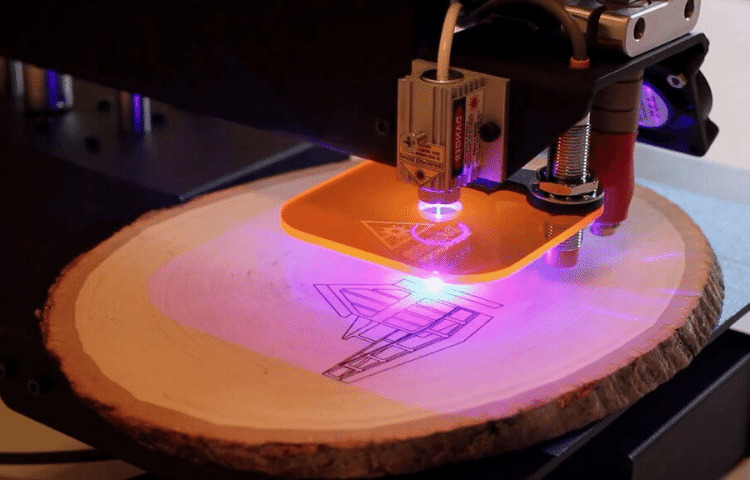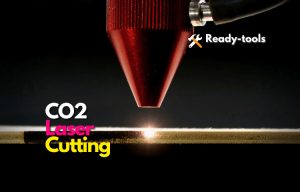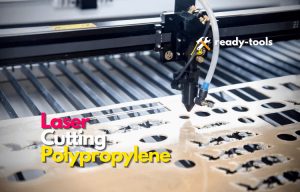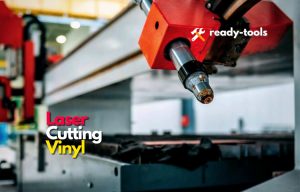The significant difference between laser cutting and 3d printing is that 3d printers can produce plastic or metal prototypes. Laser cutting uses a laser beam to cut the material to produce the results. Both the 3d printer and laser cutting produce 2D and 3D results.
A couple of types of 3D printers are FDM and SLA. Both of these printers became commercially available in the 1980s. There are different types of FDM and SLA printers on the market. Similar to other mobile manufacturers who introduce the same model while utilizing various features and technologies.
Laser cutting converts the material into vapors by using a laser beam. The optics direct the laser beam’s output. The system steers the laser beam using computer numerical control. Results from a laser beam are of high quality.
Continue reading to learn the differences between 3D printers and laser cutter
The Comparison between 3D Printing and Laser Cutting:

Price of 3D Printer and Laser Cutting Machine:
- Laser Cutter:
The price of a laser cutting machine varies from machine to machine. There are many types of laser-cutting machines. Examples: Fiber laser cutting machine, engraving through laser, metal laser cutting machine, and tube laser cutting machine.
We are quoting the prices of the laser cutting machine from amazon. The price bracket starts from 399 to 10,000 dollars. The highest price is for a fiber laser cutting machine with engraving features. The lowest price is for an electronic cutting machine. You can use this for making stickers and wall art.
- 3d Printers:
The price of a 3d printer FDM starts from 1000 dollars. FDM printers use thermoplastic to print. Utilizing thermoplastic materials is inexpensive. The filaments for FDM printers are also affordable. The filament is available in a variety of distinctive colors. The price of one kilogram of filament ranges from $40 to $100. The filament quality affects the price. A 3D FDM printer is cheaper than a 3D SLA laser cutting printer.
Colors Available for 3D Printer and Laser Cutter:
- Laser Cutter:
A laser cutter uses the laser beam to get through the vaporization process. The cuts of laser cutting are smooth. The laser doesn’t have any colors. The cuttings or engraving you will get in grey or black color.
After engraving, you can color the engraved areas by yourself. Because of their limited color palette, SLA printers do not appeal to designers. These SLA printers have a 90s feel because they continue to offer crystalline, grey, and black colors. The analyzer creates its colors by combining various pigments. However, mixing pigments is a painstaking process.
- 3D Printer:
Various colors are available for FDM 3D printer material. To enhance the color, you can even mix the dyes. Many designers are drawn to FDM 3D printers because they have a wide color range. Custom color palettes are something that many manufacturers offer to their clients. The only reason why FDM 3D printers are appealing is due to their range of colors.
Finishing of the Laser Cutter and 3D Printer:
- Laser Cutter:
If you need to give finishing to your final product, you must do polishing. A laser cutter cuts the surface by laser using the process of vaporization. The material changes into vapors due to the intense heat of the laser beam. Different types of materials require other finishing materials. Wood and metal are different materials that will require different finishing polishes. You need to use deburring process for metal prototypes. It would be best if you did milling to make the surface smooth. Milling is a process in which there is a rotating tool. The rotating tool will shave off the excess metal. You have to use the tumbling process for smaller parts than one square inch. The tumbling process also removes excess metal from the surface.
After removing the excess metal, you need to apply paint or powder coating. We suggest using powder coating because the paint contains volatile organic compounds. Powder coating is more durable than paint.
When the painting process is done, you need to apply shine polish. You can polish medium size prototypes with your bare hands. It is the same process as we use polish on cars. Apply polish on the prototype and wait for five minutes. After five minutes, gently rub the prototype with a soft cloth until the shine comes.
Prototyping is done with SLA 3D printers using lasers. The drawing becomes smaller and smoother due to the laser’s use. The width of the laser line is 20 microns. Because of its smoothness, designers adore this printer.
- 3D Printer:
FDM 3D printer layer lines are visible due to the lower layer height. It could use a smoother finish on its solid surface. The smallest resolution of an FDM printer is 50 microns. At the same time, polishing can provide a finish. Finally, epoxy coating is performed.
Accuracy of 3D Printer and Laser Cutter:
- Laser Cutter:
The accuracy of the laser cutter is précised. The width of laser cutting is 0.001 inches. The width of the laser line is 20 to 25 microns. It is almost the width of human hair.
Precision and finishing are made easy with this laser line. SLA laser printers outperform other 3D printers in terms of accuracy. The most advantageous applications for this SLA laser printer are jewelry and dentistry.
- 3D Printer:
For large prototypes, FDM printers are accurate enough. The small-size prototypes require greater accuracy. You must pick the best 3D printer if you want accuracy. There are many FDM printers on the market. Both desktop and commercial 3D printers use FDM technology. Calibrate the FDM printer to increase accuracy. The slicer on the FDM printer also affects accuracy.
Utilize non-shrinking materials. FDM printer accuracy depends on the material as well.
Strength of the Parts of 3D Printer and Laser Cutting:
- Laser Cutter:
There are many delicate parts in SLA laser printers. SLA printer parts are complex for several reasons. SLA laser printers use brittle resin, which is the cause of this. Unlike FDM printers, the SLA cannot print solid parts. Either the details will fall apart or develop cracks. Stronger resins are being tested, but they are rare on the market.
- 3D Printer:
FDM 3D printers have an advantage over their rivals. Parts for FDM 3D printers are durable. Parts for FDM 3D printers are inexpensive.
Easy to Use Fdm and Sla Printer:
- Laser Cutter:
The SLA laser printing prototypes are visually stunning. You have to deal with the mess brought on by these prototypes. After printing, these prototypes are sticky. Refillable resin is used in the SLA 3D laser printer. A large amount of space is needed for the SLA laser printer. We strongly advise you to wear the appropriate PPE because the resin is toxic.
There are many steps to take after printing. You must remove the excess resin from the prototype. Use the clippers to support your prototype. Use a UV lamp as a last resort. To harden the resin, you use UV rays.
- 3D Printer:
The use of FDM 3D printers is easy. The filament at one end and the extruder at the other. FDM 3D printers are common in workplaces and educational institutions due to their usability. The FDM printer is simple to open and maintain.
Cost Comparison of Laser Cutting Printer and 3D Printer:
- Laser Cutting Printer:
The SLA laser cutting and printing system are expensive. Its parts, like laser and micro scanners, are also costly and widely accessible. Prototypes for SLA laser cutting and printing need an additional bracing structure. Your costs will go up in addition because of this bracing structure. SLA laser cutting and printing require resin, which is expensive.
- 3D Printer:
FDM 3D printing is currently the most affordable on the market. Its machine is inexpensive, but its parts and other materials are also reasonably priced. FDM 3D printing allows you to create low-cost prototypes.
Dimension Comparison of Laser Cutting Printer and 3D Printer:
- Laser Cutting Printer:
The dimensions of the SLA printer are 145 x 145 x 175mm. SLA printers are compact devices. SLA printers have a 618-liter volume.
- 3D Printer:
Depending on your version, the FDM printer has a different size. Its dimensions are 190 x 190 x 196 mm. The smallest size of FDM printers on the market is the desktop model. The industrial version comes in the largest size. The prototype’s smallest dimension is 10*10*10 mm.
Brief Description of 3D Laser Cutting Printer:
SLA printers employ vat polymerization technology, as per the analysis above. Three categories of vat polymerization exist. Vat polymerization includes the processes of LCD, DLP, and SLA.
- The term “Stereolithography” is SLA. SLA uses UV light as a laser to harden the polymer resin.
- The term “DLP” refers to digital light processing. To harden the polymer resin, DLP uses UV rays in a projector.
- LCD is an abbreviation for Liquid Crystal Display. LCD uses a display screen to spread light throughout polymer resin, hardening it.
SLA vat photo polymerization technology is typically used. SLA makes prototypes utilizing a laser to harden polymer resin with UV rays. SLA employs a photosensitive substance. Materials made of thermoset polymers are photosensitive. Liquid thermoset polymers are available.
For the high accuracy you can achieve with SLA, a 3D printer is ideal. In 1986, this printer became widely known. It has remained popular since 1986 due to its smooth finishing.
The desktop SLA printer operates in a bottom-up orientation, whereas the industrial SLA printer employs top-down technology.
Bottom-up printers are simple to use but have a small build size. This printer might stop working during the peeling process. Top-down printers are both exact and very expensive.
Strengths and Weakness of 3D Laser Cutting Printer:

- Strength: The SLA 3D laser cutting printer will provide you with the greatest accuracy and detail. Due to the SLA 3D laser cutting printer’s use of laser technology. The SLA 3D laser cutting printer’s parts and materials have a high tolerance. The resolution of the SLA 3D laser cutting printer is significantly higher than that of the FDM printers.
- Weakness: The spare parts for SLA 3D printers will require frequent maintenance. The components work very well but need quick maintenance regularly.
Strengths and Weakness of 3D Printer:

- Strength: When we compare FDM 3D printers to others, they are relatively inexpensive. People prefer FDM printers because of their consistent results. FDM 3D printer post-processing poses no health risks.
- Weakness: Low resolution will result from using thermoplastic for printing. Due to the heating and cooling processes, FDM 3D printer will leave a minor deformity.
Frequently Asked Question:
Plasma cutter vs. laser cutter:
You can use a plasma cutter for simple cuts only. Suppose you need detailing, then choose a laser cutter. Laser cutters are more expensive than plasma cutters.
Laser engraver vs. laser cutter:
The laser engraver and laser cutters are both the same. If you need a high-end machine go for SLA 3D laser cutting printer. It has all the features of engraving and cutting. Jewelry workers love the SLA 3D laser cutting printer because of its detailing. The SLA 3D laser cutting printer gives smooth results.
Bottom Line:
The use of SLA 3D laser cutting printers and FDM 3D printers are expanding daily. Many people and businesses widely use FDM 3D technology and SLA laser technology. Some people use both technologies at once to maximize the benefits of each one’s features.
The SLA laser cutting printer’s detailed appearance will appeal to jewelry makers. The manufacturer is also using an FDM 3D printer to prototype the parts. You must determine which printing device you require on your own. The features of 3D printers and 3D laser cutters are both extensive.
An FDM 3D printer is the way to go if you need durable parts; an SLA 3D laser cutting printer is the way to go if you need detailed parts. FDM 3D printers deliver results quickly.
We sincerely hope you found this article to be useful. We will be happy to give you the information you need. We are grateful that you took the time to read our article.




